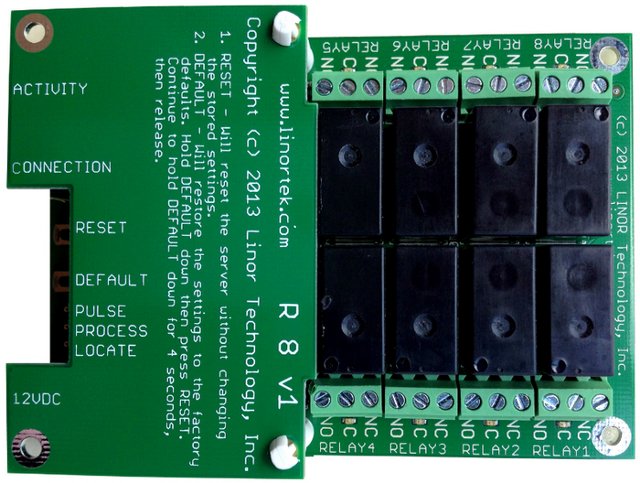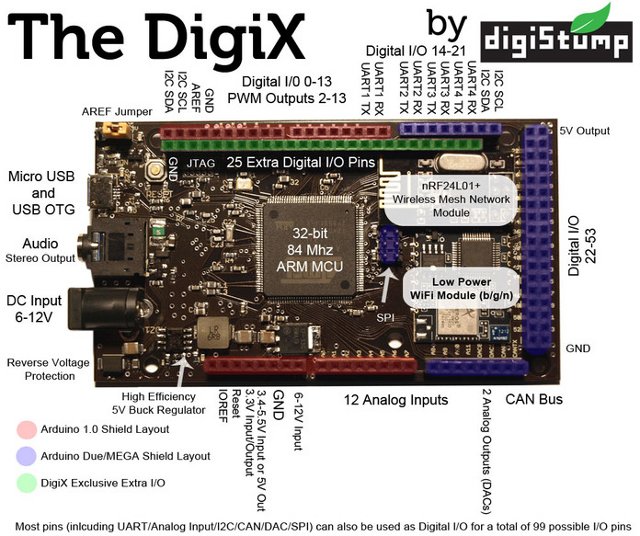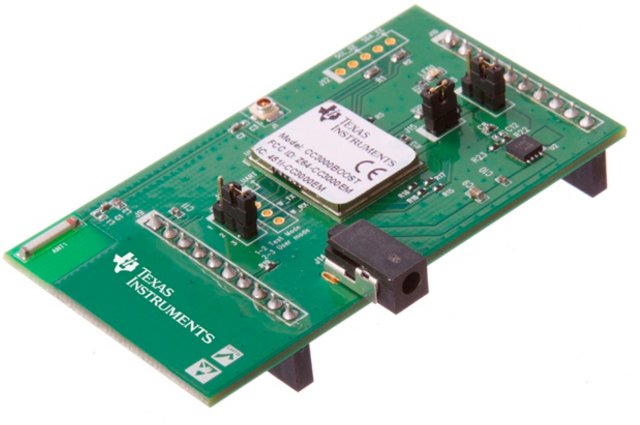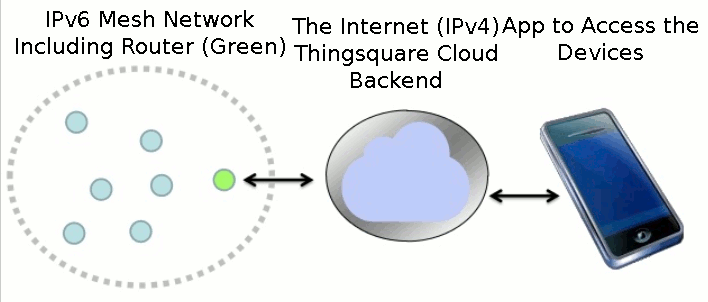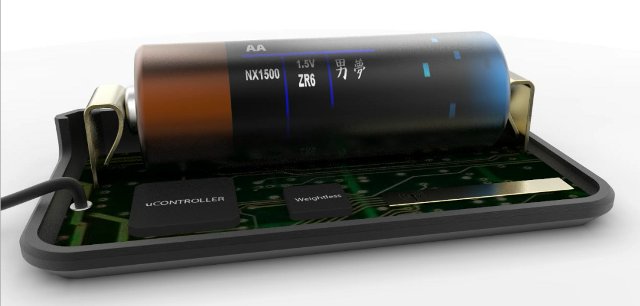Linaro Connect Europe 2013 (LCE13) is taking place in Dublin, Ireland on July 8 – 12, 2013. If you are not there, you can still follow the event remotely as the event schedule is available with tracks focused on Android, Builds and Baselines, Enterprise, Graphics and Multimedia, Linux Kernel, Network, Project Management Tools and Training, and the Testing and Validation mini-summit will also take place at the same time. There will be hacking and lab sessions each day (except on Friday) where you can expect to learn useful skills. I’ve selected 2 sessions per day that I think might be particularly interesting. Monday 10:00 – 10:45 – ARMv8 Status and Updates Current Status of v8 tree What’s merged? What’s features are next priorities? Platform Updates What members should know about adding new v8 platforms 12:00 – 13:00 – How to make Android more efficient for entry level products The main objective of […]
Linor Technology Fargo are Ethernet Boards with 4 to 8 Relays
There are more and more “IoT” solutions for home or industrial automation which allow you to control your lights or other equipments remotely with your smartphone or tablet. Many of them are DIY with boards such Arduino or Raspberry Pi combined with an expansion board featuring one or more relays, and some of them can be used out of the box such as Linor Technology Fargo boards. The company designed 4 boards that are powered by a Microchip PIC32 MCU with a small NOR flash, provide Ethernet connectivity, and run a small webserver that allows you to monitor and control the relays with any connected device that can run a web browser. Here are the hardware specifications for the boards (Fargo R8, R4, R4ADI and R4DI): MCU – Microchip PIC32 32-bit MCU Storage – 8MB flash on Fargo R8 for firmware and log storage (up to 10,000 items log) Sensors: […]
$59 Digitstump DigiX is an Arduino Due Compatible Board with Wi-Fi and Mesh Networking
The DigiX, by Digistump, is hobbyist board with an Atmel SAM3 Cortex M3 MCU @ 84 MHz, embedded low power Wi-Fi (b/g/n) and mesh networking,audio output, USB on the go support, and the company claims it is 100% compatible with anything that works with the Arduino Due, with some extra I/Os for a total of 99 I/O pins. The hardware specifications go as follows: MCU – Atmel AT91SAM3X8E 32-bit ARM Cortex M3 Processor @ 84 Mhz with 96KB SRAM, 512KB Flash Connectivity On-board 802.11b/g/n WiFi Module (FCC/CE Approved) On-board nRF24L01+ wireless module (removable) – 2.4Ghz band 99 I/O Pins including 12 PWM, 12 Analog Input, 2 Analog Output (DAC), CAN bus, 4x UARTs, 2x I2C, SPI, JTAG, DMA and more. Audio – 3.5mm stereo jack USB – micro USB OTG port Misc – On-board RTC, user LED Power Supply – 3.3V, 3.4-5.5V (LiPo Ready), 5V, or 6-16V input (on-board buck regulator) (Max?) Power […]
Texas Instruments Introduces SimpleLink Wi-Fi CC3000 BoosterPack
Texas Instrument launched SimpleLink Wi-Fi CC3000 in Q1 2012 in order to bring WiFi connectivity to any device including 8-bit or 16-bit MCU, as CC3300 internally handled all networking tasks, and exchange data with the MCU via an SPI interface. This Wi-Fi processor allows to use Wi-Fi for data transmission for the Internet of Things, and offers much better battery than other system relying on software to handle network traffic. Today, the company has just announced SimpleLink Wi-Fi CC3000 BoosterPack, a low cost evaluation platform that works with both MSP430 and Tiva C Series LaunchPad evaluation kits, and sells for $35. SimpleLink Wi-Fi CC3000 BoosterPack features and benefits as seen in the press release: SmartConfig technology: One-step Wi-Fi configuration using smartphones, tablets or PCs Easy network setup for display-less (headless) devices Simultaneous multiple device provisioning iOS, Android and Java sample applications available Royalty-free software Flexible memory size – Small memory foot print […]
Souliss Automation and IoT Framework Makes Your Home Smarter
Souliss is an open-source framework written in C/C++ for the Internet of Things and home automation that runs on Arduino boards, or other Atmel AVR MCU based boards, and let your control lighting, heating, or anything else you can think of via your Android device, or switches connected to your board(s). You can get started with Souliss in 3 steps: Getting the building blocks, for example: Arduino, Olimex, or other AVR boards (See list of supported boards) Relay boards ON/OFF Switches, Lights, etc… Wi-Fi router Download and load Souliss to an AVR powered board controlling real things such as lights. Monitor and/or control via Souliss Home Automation App for Android. A detailed getting started guide is provided on Souliss Google Code page. Internally, the framework is composed of three parts: Souliss, an application level layer, MaCaco, a communication protocol and vNet, a transport layer. I’ll skip details in this post, […]
Design West Summit – 23-25 April 2013
Design West 2013, previously known as the Embedded Systems Confertence, will take place later this month, on 23-25 April to be exact, at San Jose McEnery Convention Center in San Jose, California, US. The event will be divided into 22 tracks dealing with software development, hardware design, operating systems, security and more: Android Certificate Program – Two-day hands-on embedded android workshop. Black Hat Summit – The Black Hat Embedded Security Summit will provide electronics professionals with essential information and tools, as well as a forum for the discussion and evaluation of the latest solutions for securing their embedded systems. Training courses will focus on topics such as Network Security, Incident Response, Web Application Security, and Exploit Development. Connectivity and Networking – The Connectivity and Networking track educates design engineers on wired and wireless communications, spanning need-to-know topics from essentials of USB device development to antenna and RF system design. Debugging […]
Thingsquare Mist – Open Source Firmware for The Internet of Things
Thingsquare recently released the source code for the Thingsquare Mist firmware, an ultra lightweight router software (<4 kB memory) for the Internet of Things based on open Internet standards such as IPv6, RPL (Routing Protocol for Lossy networks), and 6lowpan. Thingsquare Mist allows to connect battery-powered wireless micro-controllers to the Internet, and is currently used in applications such as smart light bulbs, connected home appliances, and connected cities. The IPv6 mesh network is composted of nodes with a low power radio that communicate with the Mist router (Green), which in turn connect to the Internet and Thingsquare Cloud backend (Thingsquare Haven) to store the data, and/or receive control commands via Ethernet or Wi-Fi. The end users can then use an App to monitor, and/or control the devices remotely. Thingsquare Mist uses IETF RPL IPv6 mesh routing protocol (pronounced “ripple”) for IPv6 nodes communications. Thingsquare Mist runs on several low-power wireless […]
Weightless Overview and Neul Iceni, The First Weightless Chip
The Weightless Special Interest Group (SIG) has recently announced the world’s first transceiver chip using the Weightless Specification and operating over white space spectrum. Neul Iceni chipset makes use of the entire TV white space spectrum to provide low power connectivity for M2M and IoT applications using the Weightless Standard. Weightless Standard Overview Since this is the first time I write about the Weightless standard, let’s see what it is and what will be used for. There has been a lot of talk about the Internet of Things (IoT) and machine to machine communication (M2M), but one of the limiting factor is currently the cost of technology (and networks?) to provide communication. That is where “white space” spectrum comes into play. A large spectrum was used by analog TV channels, and since many countries have now switched to digital TV, part of this spectrum is unallocated (hence the name “white […]



